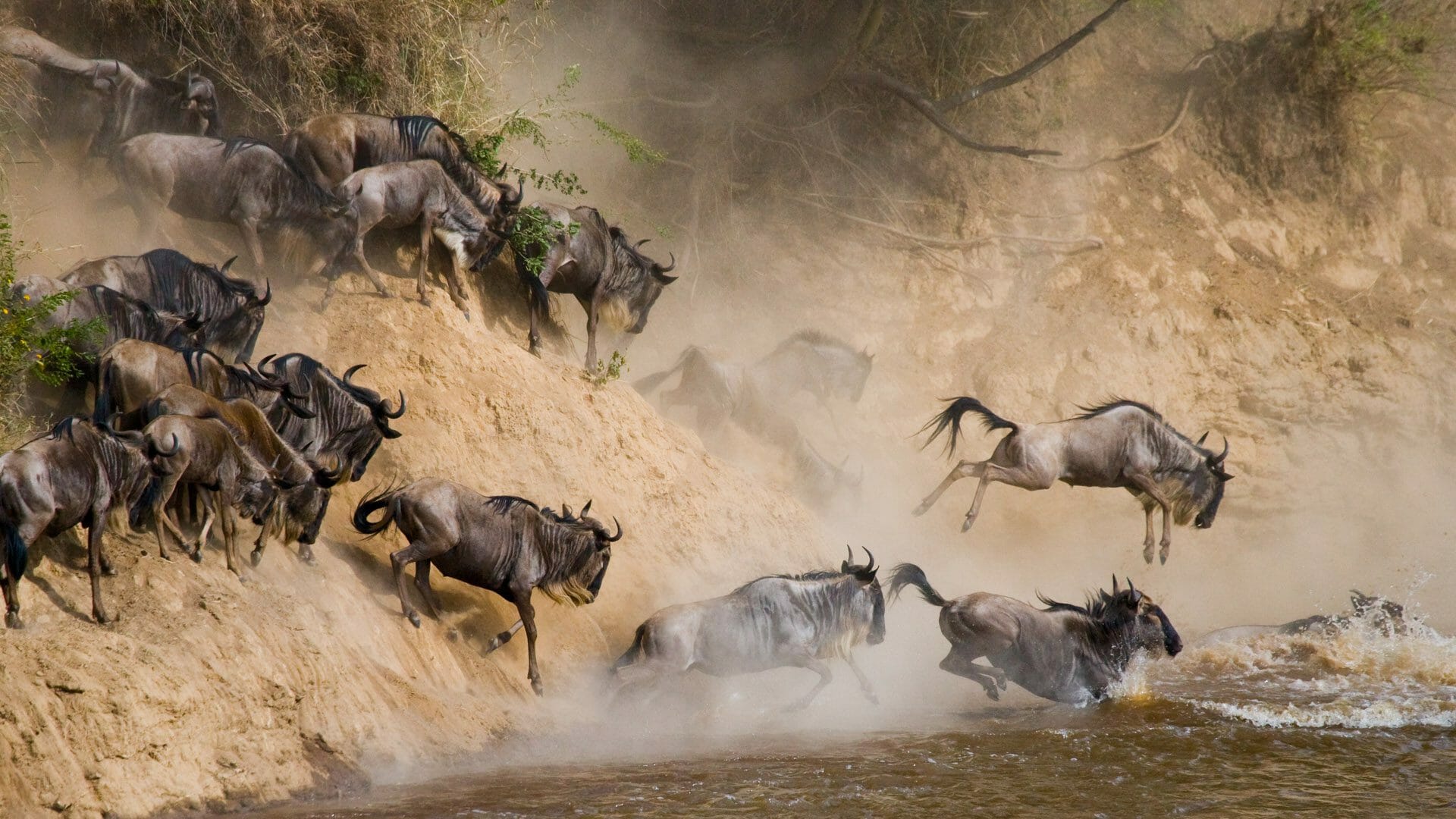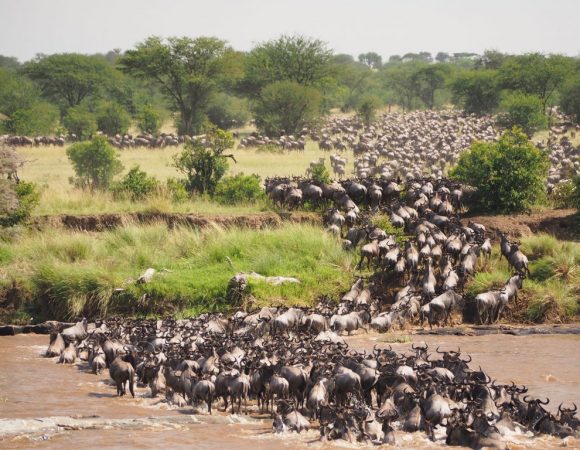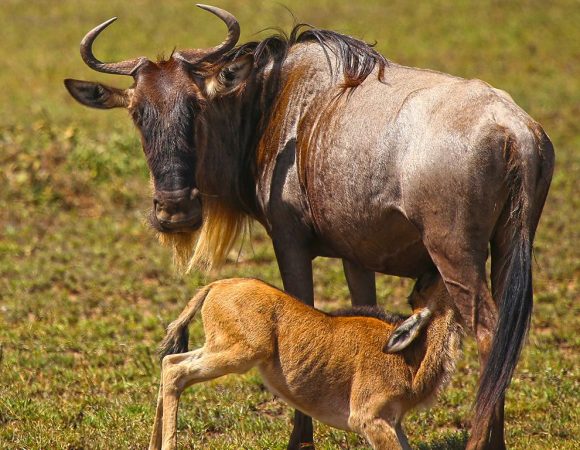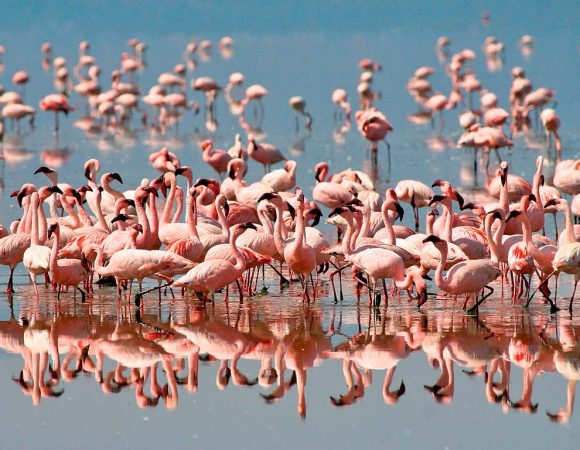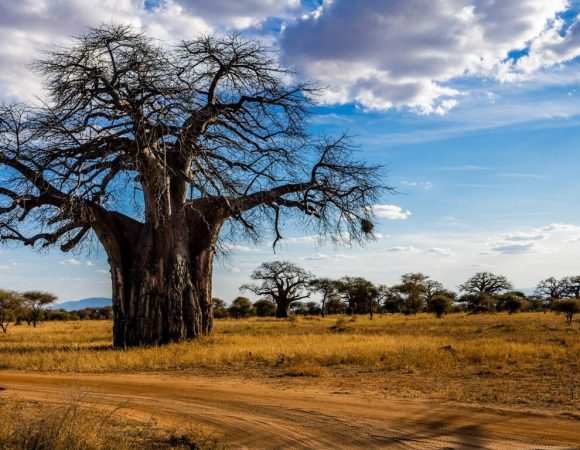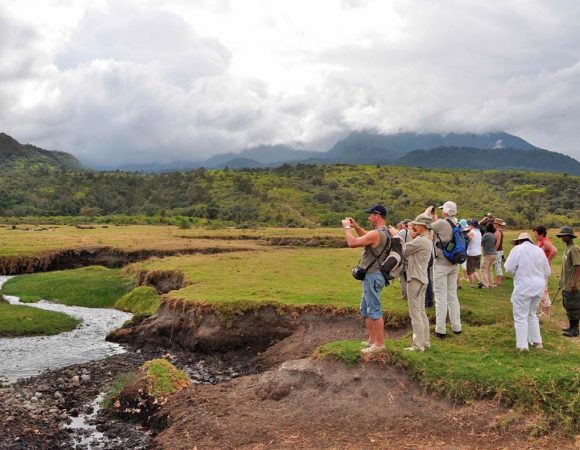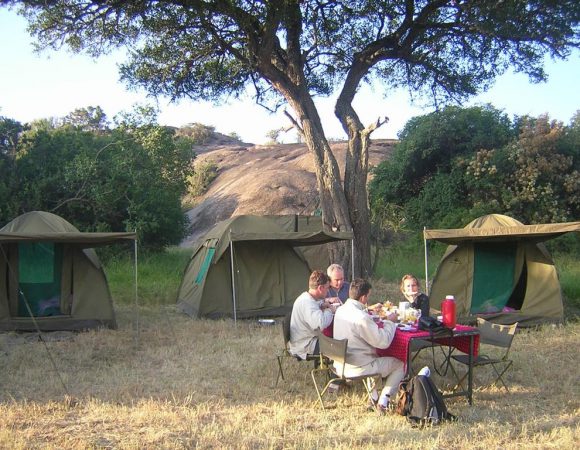Serengeti National Park Safari
The Serengeti National Park is by far, the most popular National Park in the whole of East Africa. It is also a UNESCO World Heritage site and recently proclaimed a wonder of the world!
The Serengeti offers the visitor a unique Tanzania safari during the Annual great wildebeest migration. A stampede of thousands and millions of wildebeest and zebras while at the same time playing a part to satisfy its purpose and role play in the food chain and inescapable life cycle of the survival for the fittest game of the African wild, marking territories and mating. In a bid to cross the Mara River across crocodile-infested waters on their annual exodus that happens in between the Serengeti National Park in Tanzania and the Masai Mara National Park in Kenya for fresh grass and rain water. Just before the great wildebeest migration begins across the Mara River, 8,000 calves are reproduced each day before the long 600 mile exodus begins again. The Serengeti plains play a host to a stampede of over six million wildebeest together with a herd of about 200,000 Zebras and an equally good number of Thomson Gazelles.
Whether the wildebeest are there or not, still the Serengeti offers arguably the most breath-taking game viewing safari in Africa: great herds of buffalo, large groups of elephant and giraffe, and thousands of eland, topi, kongoni, impala and Grant’s gazelle can be seen across the open plains.
Predator-viewing safaris take centre stage here in the Serengeti as the spectacle of predator versus prey dominates Tanzania’s greatest park. Golden-maned lion prides feast on the availability of plain-grazers at large. Lone-ranging leopards haunt the acacia trees along the Seronera River, while a high population of cheetahs prowl the South Eastern plains of the Serengeti. In a unique coincidence, all three African jackal species are found here, alongside the spotted hyena and a number of more elusive small predators, ranging from the insectivorous aardwolf to the beautiful and rarely seen serval cat.
But there is more to Serengeti than just large mammals and big cats. Brightly-coloured agama lizards and furry rock hyraxes scuffle around and beneath the surfaces of the park’s isolated granite kopjes. An astonishing 100 varieties of dung beetle have been recorded, as have over 500 different bird species, ranging from the out-sized ostrich and secretary bird of the open grassland, to the black eagles that soar high above the Lobo Hills.
As enduring as the game viewing is, it can be enough for some to simply enjoy the landscapes – the free sense of space that characterizes the Serengeti Plains, stretching across the vast sun-burnt savannah to a blurred and glittering golden horizon at the end of the earth. Yet, after the rains, this golden stretch of grass is transformed into an endless evergreen carpet flecked with wildflowers. There are also wooded hills and towering termite mounds, rivers lined with fig trees and acacia woodland stained brown tan by dust.
However popular the Serengeti might be, it still remains so vast that you may be the only human audience when a pride of lions masterminds a siege, focussed unswervingly on its next meal.
Click here for Accommodation Serengeti National Park Lodges
Serengeti Safaris:
Things to do in Serengeti National Park?
Serengeti safari activities are countless: Hot air balloon safaris, walking safari, sightiseeing of Maasai rock paintings and musical rocks, picnicking, game drives, bush lunch/dinner – any or all of these activities can be arranged by Ecological Wilderness Adventures so simply contact us for information.
Facts About Serengeti National Park
Park Size: 14,763 sq km (5,700 sq miles)
Location: 335km (208 miles) from Arusha, stretching north to Kenya and bordering Lake Victoria to the west.
Getting there: The rugged Serengeti Highway
• Scheduled and charter flights from Arusha, Lake Manyara and Mwanza.
• Drive from Arusha, Lake Manyara, Tarangire or Ngorongoro Crater.
Visit neighbouring Ngorongoro Crater, Olkarien Gorge, Gol Mountains and Lake Ndutu.
Best time to visit Serengeti National Park
• To follow the wildebeest migration, December-July.
• To see predators, June-October.
Oliver’s: Interesting Facts
- 8 luxurious en-suite tents, decorated in an authentic safari fashion
- Very remote area of the park
- Walking safaris, night drives
- Fantastic, experienced guiding
- Oliver’s: In depth


